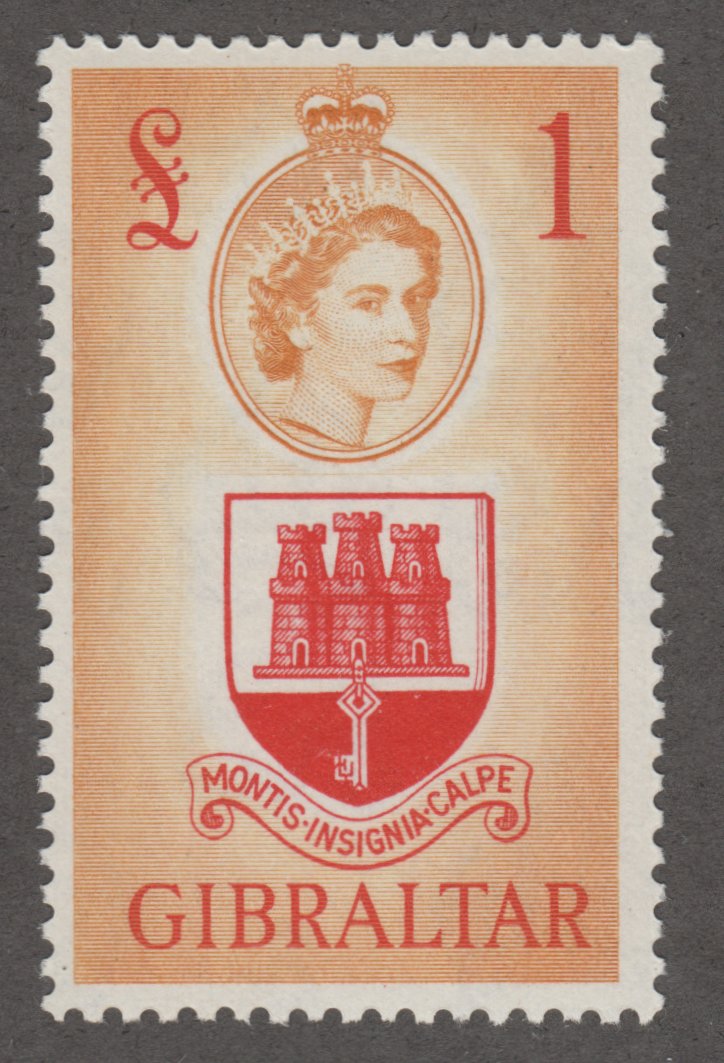
Discussion - Member to Member Sales - Research Center

Discussion - Member to Member Sales - Research Center



4 Members
like this post.
Login to Like.
Hi Rob
Is there an easy way to distinguish aniline ink on the 5D?
Regards
Horamakhet

Login to Like
this post
Hi Horamakhet
Yes there is, though it is best to use an unused stamp to see the aniline ink, being immersed in water to remove the stamp from the cover will only make the aniline difficult to see and it could also remove the aniline.
The ink has a dark smudged look. I have enlarged both the 1960 Girl Guides and the 1952 KGVI 7½d.


Aniline ink

Regular issue

Login to Like
this post
Hi Rob
I will see what I have and post for a comment
Regards
Horamakhet

Login to Like
this post
So just how volatile are these aniline inks? I recently sorted a small hoard of Dutch Indies, and noticed that a few of the "rice field" issue had obvious ink loss. Scott references ink loss as a result from soaking, so I am loathe to get any of these wet (removing hinge remnants, stuck to album pages, etc....)
I have also run across the bleed-through effect on postmarks. Were aniline inks commonly used for cancellations? I wouldn't think the postal authorities would appreciate a cancellation that was easily obliterated, but maybe some clerks didn't know (or care) about ink chemistry when selecting cancellation inks?

Login to Like
this post
Hi partsguy
Aniline ink was used as a deterrent against people re-using the stamp, aniline ink bleeds all over the stamp(s) making them unusable.
Ink loss can be the result of soaking; it could also be the result of under-inking (ink stripping). I have not heard of aniline ink ever being used for cancellations, the use of aniline ink is very expensive and the issuance of such stamps that had aniline infused in the processing of the stamp was in the experimental stage, it was not popular with the printers so the process of such inks on stamps were short loved.
Any stamp with aniline ink would be ruined if a collector tries to remove them by soaking, though there are collectors who were fortunate not to have the stamp bleed or very little bleeding had occurred.
Keep an album upright will help prevent stamps sticking to pages as the weight of the album can cause stamps to stick.
The cause of bleeding postmarks isn’t caused by aniline but over-inking the obliterator. The very worse a stamp can receive from the postal service is some idiot using a pen or a permanent marker scribbling all over the stamp(s).

Login to Like
this post
Thanks Rob!

Login to Like
this post
Glad to be of assistance.

Login to Like
this post
"The very worse a stamp can receive from the postal service is some idiot using a pen or a permanent marker scribbling all over the stamp(s)."
Rob totally agree - it seems to be happening more and more. Spoke to our local PO who have stated they will try not to do it this end, but a lot is done at the sending PO.

Login to Like
this post
Dear Rob1956
Regarding the Australian 1952 KGVI 7½d Blue stamp (ACSC No. 257) displayed above.
You imply in your post dated 27th of November 2020, that this stamp contains Aniline Ink. Unfortunately this is a misconception.
The particular stamp ACSC No. 257, KGVI 7½d was never printed with Aniline ink.
Supporting Argument
1. The current edition of the Australian Commonwealth Specialists' Catalogue (ACSC) KGVI 4th edition 2019 does no list the stamp or shade of the stamp containing any Aniline ink. On page 6/152 in the footnote section "The greenish-blue (aniline) shade has now been deleted, as it is considered to be the result of "sweating".
2. The topic of ACSC No. 257 KGVI 'Aniline' variety has been extensively discussed in the Stampboards forum in 2016 under the title "Australian Aniline KGVI Stamp Issues" and again in 2018 "Does Australian ACSC 257B Aniline KGVI 7½d really exist?". The opinion of many leading and reputable stamp dealers is that they have never seen or handled this so called variety.
3. One hypothesis as to the cause of the smudging or bleeding of the blue ink, is that the stamp was stored within cheap plastic and over time the plastic has sweated and caused the blue ink to smudge.
4. The stamp was produced in 1952 in a single printing of 9,600,000 stamps. Logic would suggest with such a large number of stamps printed there would have to be more than a single 'Aniline' ink stamp in existence.
Respectfully yours,
Melbournian

Login to Like
this post
Hi Melbournian
Thanks for letting me know about the change regarding the stamp in question, I have the current ACSC and it does mention the deletion and the mention of the stamp sweating. I know a few very reputable stamp dealers who still believe the stamp to be aniline, I’ll have to show them the new entry and see what they say (one of the dealers I know is a major contributor to the ACSC).
I do know the quantity of this stamp, and I am aware there is no such thing as a single aniline ink stamp being printed.
Rob

Login to Like
this post
Member ACCC (Australian Commonwealth Collectors Club of NSW)
20 Nov 2020
08:39:35pm
1966 50 cent Dampier with strong offset and 1960 Golden Jubilee of Guiding 1910-1960 in aniline ink with an offset like reverse (very deep shade on dull white paper and slightly smudged lettering). The unusual usage of aniline ink is unrecorded as no known QEII pre-decimal or decimal stamp has ever been recorded using aniline ink.


4 Members
like this post.
Login to Like.

re: Dampier Offset & Unrecorded Aniline ink
Hi Rob
Is there an easy way to distinguish aniline ink on the 5D?
Regards
Horamakhet

Login to Like
this post
Member ACCC (Australian Commonwealth Collectors Club of NSW)
27 Nov 2020
03:27:13am
re: Dampier Offset & Unrecorded Aniline ink
Hi Horamakhet
Yes there is, though it is best to use an unused stamp to see the aniline ink, being immersed in water to remove the stamp from the cover will only make the aniline difficult to see and it could also remove the aniline.
The ink has a dark smudged look. I have enlarged both the 1960 Girl Guides and the 1952 KGVI 7½d.


Aniline ink

Regular issue

Login to Like
this post

re: Dampier Offset & Unrecorded Aniline ink
Hi Rob
I will see what I have and post for a comment
Regards
Horamakhet

Login to Like
this post

re: Dampier Offset & Unrecorded Aniline ink
So just how volatile are these aniline inks? I recently sorted a small hoard of Dutch Indies, and noticed that a few of the "rice field" issue had obvious ink loss. Scott references ink loss as a result from soaking, so I am loathe to get any of these wet (removing hinge remnants, stuck to album pages, etc....)
I have also run across the bleed-through effect on postmarks. Were aniline inks commonly used for cancellations? I wouldn't think the postal authorities would appreciate a cancellation that was easily obliterated, but maybe some clerks didn't know (or care) about ink chemistry when selecting cancellation inks?

Login to Like
this post
Member ACCC (Australian Commonwealth Collectors Club of NSW)
29 Nov 2020
05:14:44pm
re: Dampier Offset & Unrecorded Aniline ink
Hi partsguy
Aniline ink was used as a deterrent against people re-using the stamp, aniline ink bleeds all over the stamp(s) making them unusable.
Ink loss can be the result of soaking; it could also be the result of under-inking (ink stripping). I have not heard of aniline ink ever being used for cancellations, the use of aniline ink is very expensive and the issuance of such stamps that had aniline infused in the processing of the stamp was in the experimental stage, it was not popular with the printers so the process of such inks on stamps were short loved.
Any stamp with aniline ink would be ruined if a collector tries to remove them by soaking, though there are collectors who were fortunate not to have the stamp bleed or very little bleeding had occurred.
Keep an album upright will help prevent stamps sticking to pages as the weight of the album can cause stamps to stick.
The cause of bleeding postmarks isn’t caused by aniline but over-inking the obliterator. The very worse a stamp can receive from the postal service is some idiot using a pen or a permanent marker scribbling all over the stamp(s).

Login to Like
this post

re: Dampier Offset & Unrecorded Aniline ink
Thanks Rob!

Login to Like
this post
Member ACCC (Australian Commonwealth Collectors Club of NSW)
29 Nov 2020
09:07:23pm
re: Dampier Offset & Unrecorded Aniline ink
Glad to be of assistance.

Login to Like
this post

re: Dampier Offset & Unrecorded Aniline ink
"The very worse a stamp can receive from the postal service is some idiot using a pen or a permanent marker scribbling all over the stamp(s)."
Rob totally agree - it seems to be happening more and more. Spoke to our local PO who have stated they will try not to do it this end, but a lot is done at the sending PO.

Login to Like
this post
01:03:22am
re: Dampier Offset & Unrecorded Aniline ink
Dear Rob1956
Regarding the Australian 1952 KGVI 7½d Blue stamp (ACSC No. 257) displayed above.
You imply in your post dated 27th of November 2020, that this stamp contains Aniline Ink. Unfortunately this is a misconception.
The particular stamp ACSC No. 257, KGVI 7½d was never printed with Aniline ink.
Supporting Argument
1. The current edition of the Australian Commonwealth Specialists' Catalogue (ACSC) KGVI 4th edition 2019 does no list the stamp or shade of the stamp containing any Aniline ink. On page 6/152 in the footnote section "The greenish-blue (aniline) shade has now been deleted, as it is considered to be the result of "sweating".
2. The topic of ACSC No. 257 KGVI 'Aniline' variety has been extensively discussed in the Stampboards forum in 2016 under the title "Australian Aniline KGVI Stamp Issues" and again in 2018 "Does Australian ACSC 257B Aniline KGVI 7½d really exist?". The opinion of many leading and reputable stamp dealers is that they have never seen or handled this so called variety.
3. One hypothesis as to the cause of the smudging or bleeding of the blue ink, is that the stamp was stored within cheap plastic and over time the plastic has sweated and caused the blue ink to smudge.
4. The stamp was produced in 1952 in a single printing of 9,600,000 stamps. Logic would suggest with such a large number of stamps printed there would have to be more than a single 'Aniline' ink stamp in existence.
Respectfully yours,
Melbournian

Login to Like
this post
Member ACCC (Australian Commonwealth Collectors Club of NSW)
30 Nov 2020
06:20:58am
re: Dampier Offset & Unrecorded Aniline ink
Hi Melbournian
Thanks for letting me know about the change regarding the stamp in question, I have the current ACSC and it does mention the deletion and the mention of the stamp sweating. I know a few very reputable stamp dealers who still believe the stamp to be aniline, I’ll have to show them the new entry and see what they say (one of the dealers I know is a major contributor to the ACSC).
I do know the quantity of this stamp, and I am aware there is no such thing as a single aniline ink stamp being printed.
Rob

Login to Like
this post


